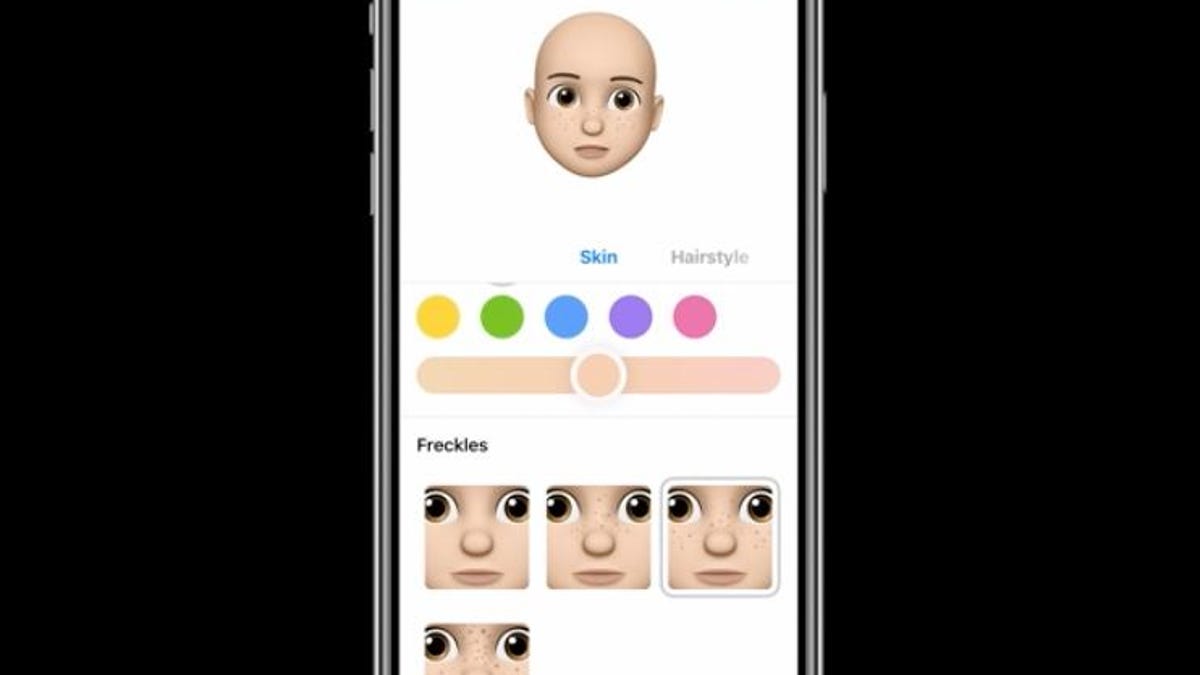How Apple's Memoji of your face already beats the Galaxy S9
Let the Memoji versus AR Emoji battle begin.

Memoji > AR Emoji when it comes to customization.
iPhones and iPads will soon be able to make a 3D emoji of your own face that moves when you do. Apple calls it a "Memoji," and it's an offshoot of Animoji, the animated emoji that live inside iMessage in Apple's iOS 12 software update.
Sound familiar? 3D emoji are the next evolution in avatars that people personalize to mark their identity and interact with others online.
Samsung crossed the you-emoji finish line first when it released AR Emoji on its two Galaxy S9 phones. But, despite being made with the help of Oscar winners who know how to do face capture really well, AR Emoji are creepy and weird and rarely look like the scores of CNET editors who tried making them.
We won't know for sure how Apple's Memoji will stack up to AR Emoji until we actually get a chance to make and use our own Memoji, but I can already see at least one early win for the iPhone.
Your Memoji might actually look like you
I can already tell that Memoji have more customization options for your 3D avatar than AR Emoji. The Galaxy S9 has zero options for curly hair and not enough skin tones to choose from.
Sliders and color selection tools help you fine-tune your digital face.
Even in the short Memoji presentation, I already saw at least three styles for curly and wavy tresses, and at least 10 shades for realistic skin (you can also make yourself purple, 'cause why not?).
A Memoji lets you choose your eye color, eye shape and ear shape, add freckles, pick from multiple glasses frames and tint lenses, and add earrings. These choices are limited on the Galaxy S9, which sets up your AR Emoji for you by scanning your face using the phone's selfie camera.
The Animoji update in iOS 12 (coming this fall) gives all avatars the ability to stick out their tongues, which is something that AR Emoji don't do, no matter how often I've tried.
The Galaxy S9's claim to fame is that AR Emoji uses the selfie-camera to make your emoji fast, but I'd rather be able to make my emoji look and feel like me -- even though Apple's Memoji are far more cutesy-cartoony than the Galaxy S9's more realistic-but-unsettling AR Emoji.
What Samsung does better (so far)
The greatest strength of Samsung's AR Emoji is that you can share one with any phone on any platform that accepts animated GIFs (you can record videos, too).
Apple's Memoji feature appears to work within iMessage and FaceTime only, which means you'll only be able to share them with other iPhone and iPad users, and not on platforms like Facebook.
See also
AR Emoji generate quickly and live in the camera app, and you can make AR Emoji of other people, not just yourself (I'm still not sure why you'd want to do this).
You can overlay another character, to "become" Mickey or Minnie Mouse, for example, thanks to Samsung's partnership with Disney .
iPhone Memoji won't work on all iPhones
With Memoji, you build your avatar from scratch, but the new feature uses the 3D depth-sensing camera found in the iPhone X to track your facial movements -- when you turn your head, or stick out your tongue.
That means it will only work on that phone and on future devices that have Apple's TrueDepth camera. Sorry, iPhone 8 owners.
We also don't know how well Memoji tracks your face in the long term. Samsung's AR Emoji avatars quiver and twitch when your face is idle, which spins the creep factor dial to high, but Animoji have a slight case of the shakes, too. From the presentation, it looks like Memoji might also jiggle while you're collecting your thoughts.
I absolutely can't wait to test this out the first chance I get.
Neither Samsung nor Loom.ai -- the company behind the Galaxy S9's AR Emoji -- immediately responded to a request for comment.
Article originally published June 4 at 1:09pm PT and was last updated on June 5 at 7:16am PT.
WWDC 2018: Everything Apple just announced
iOS 12: Siri shortcuts, group FaceTime and 'Memoji' Animoji of you

